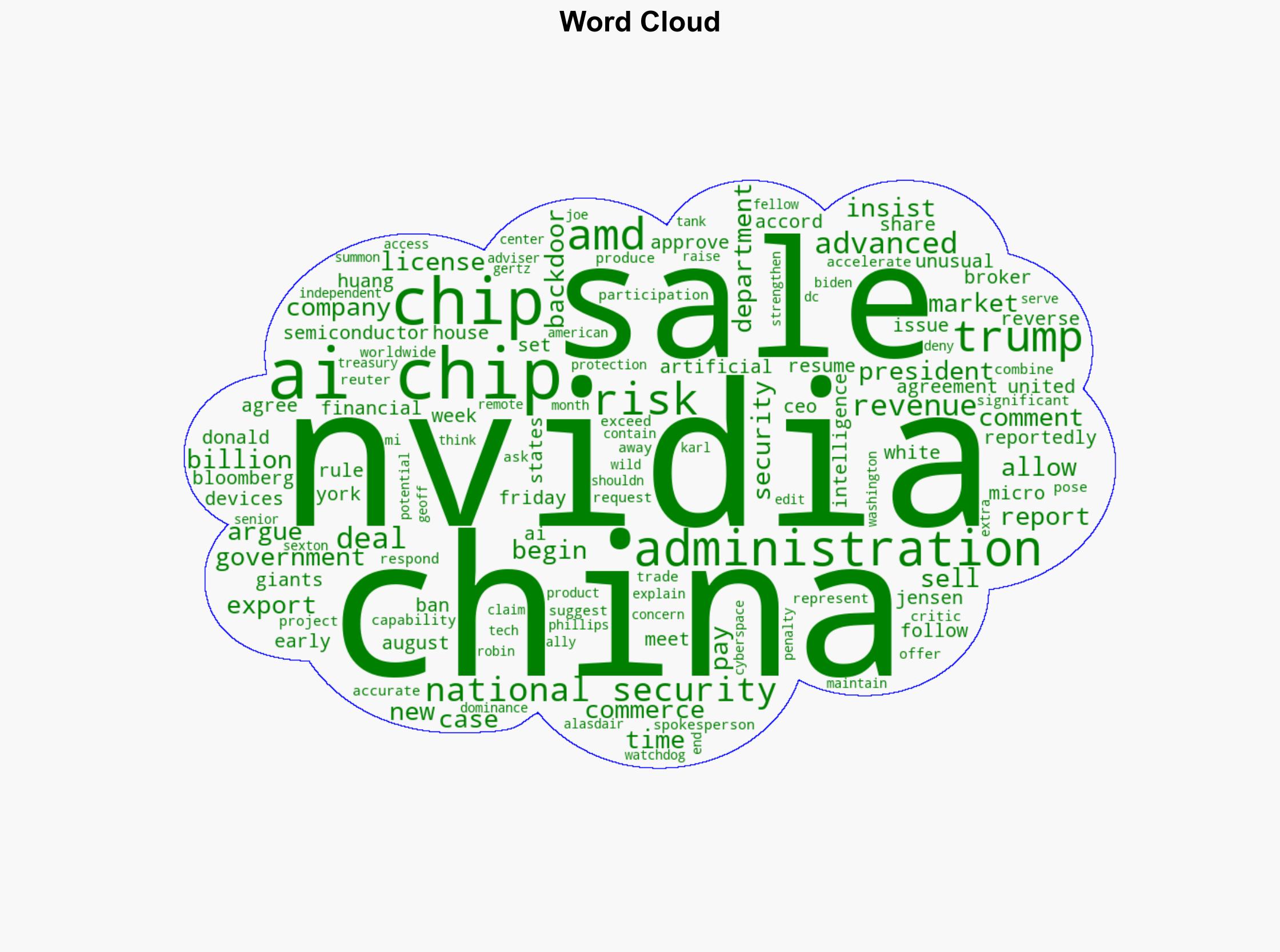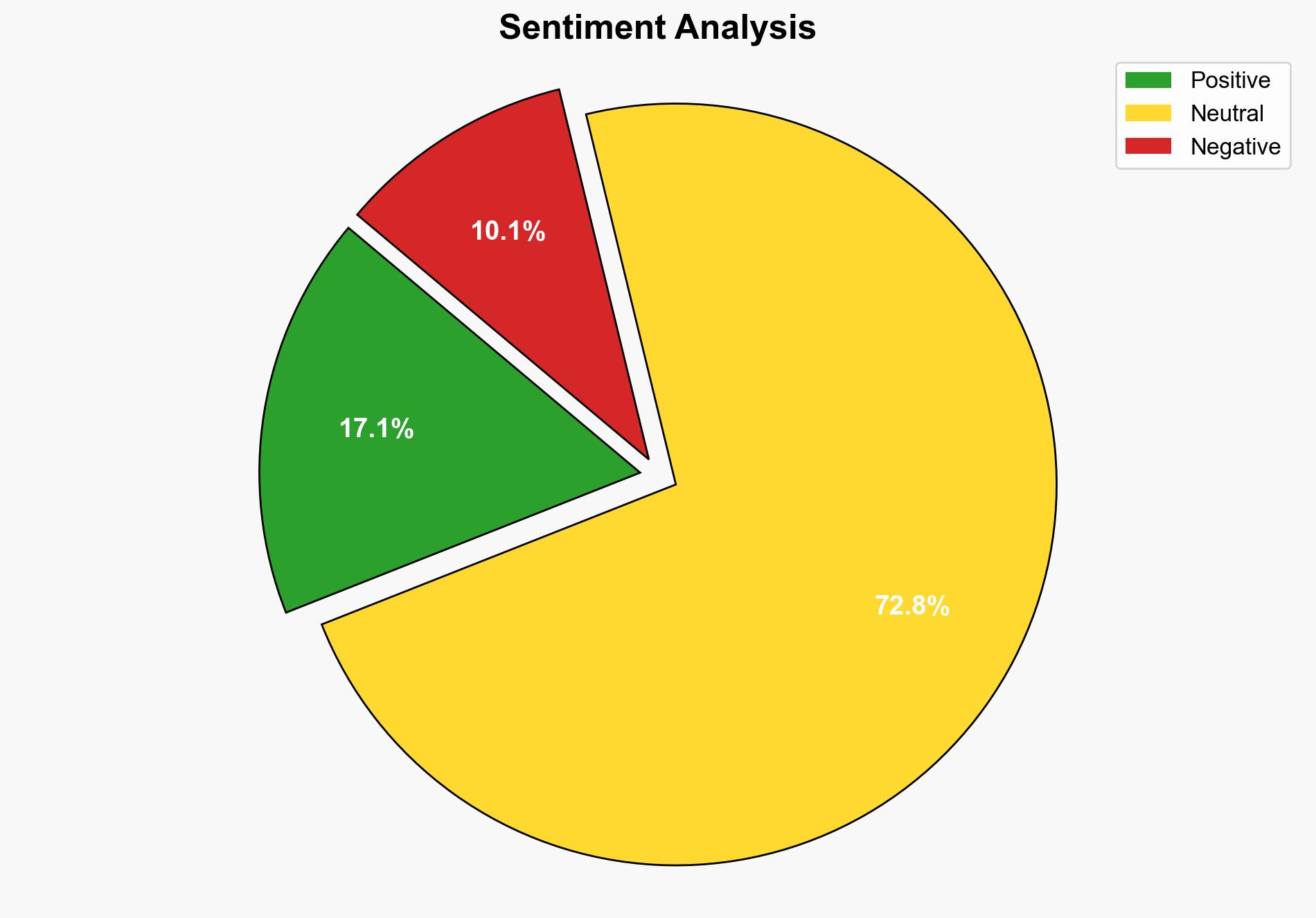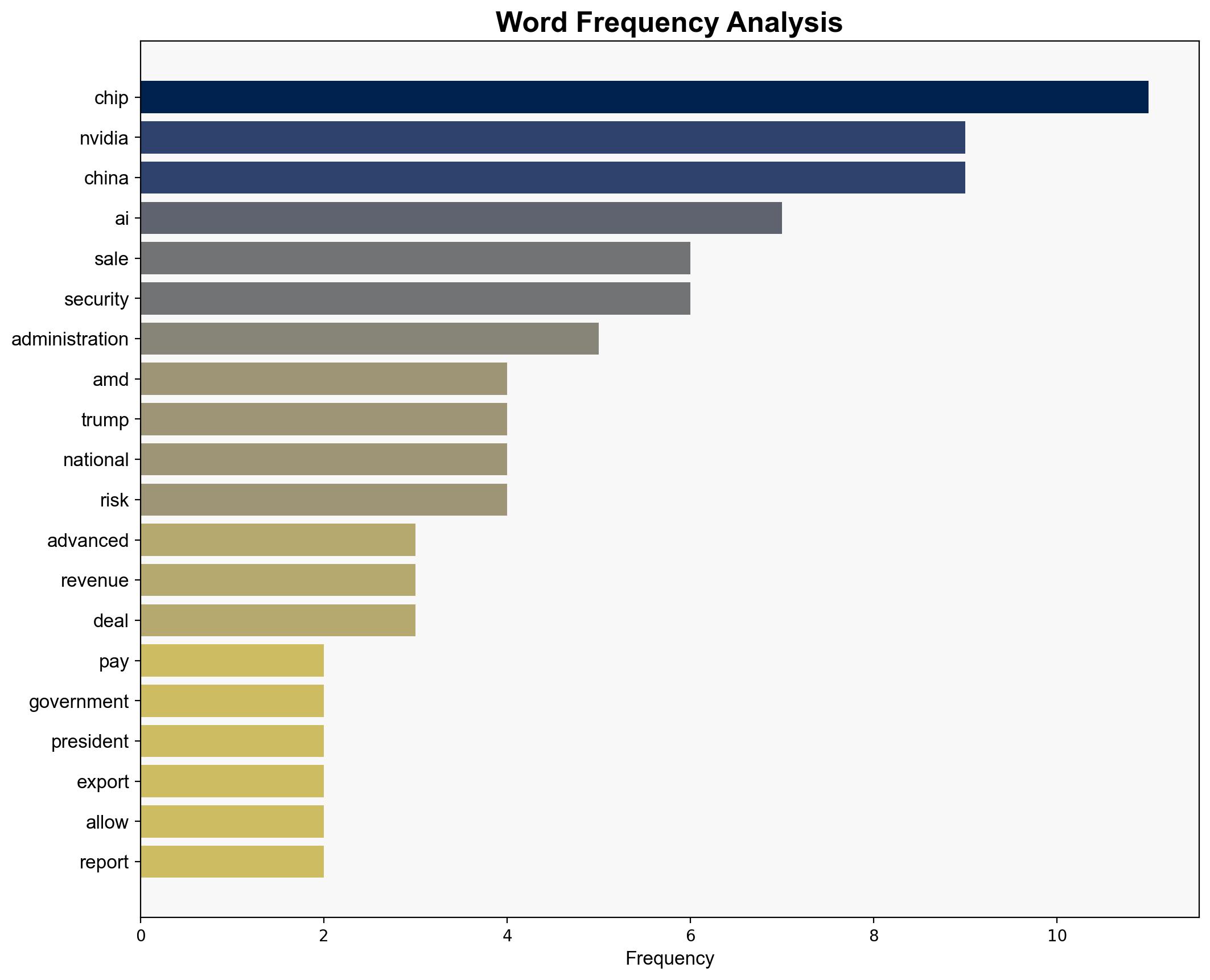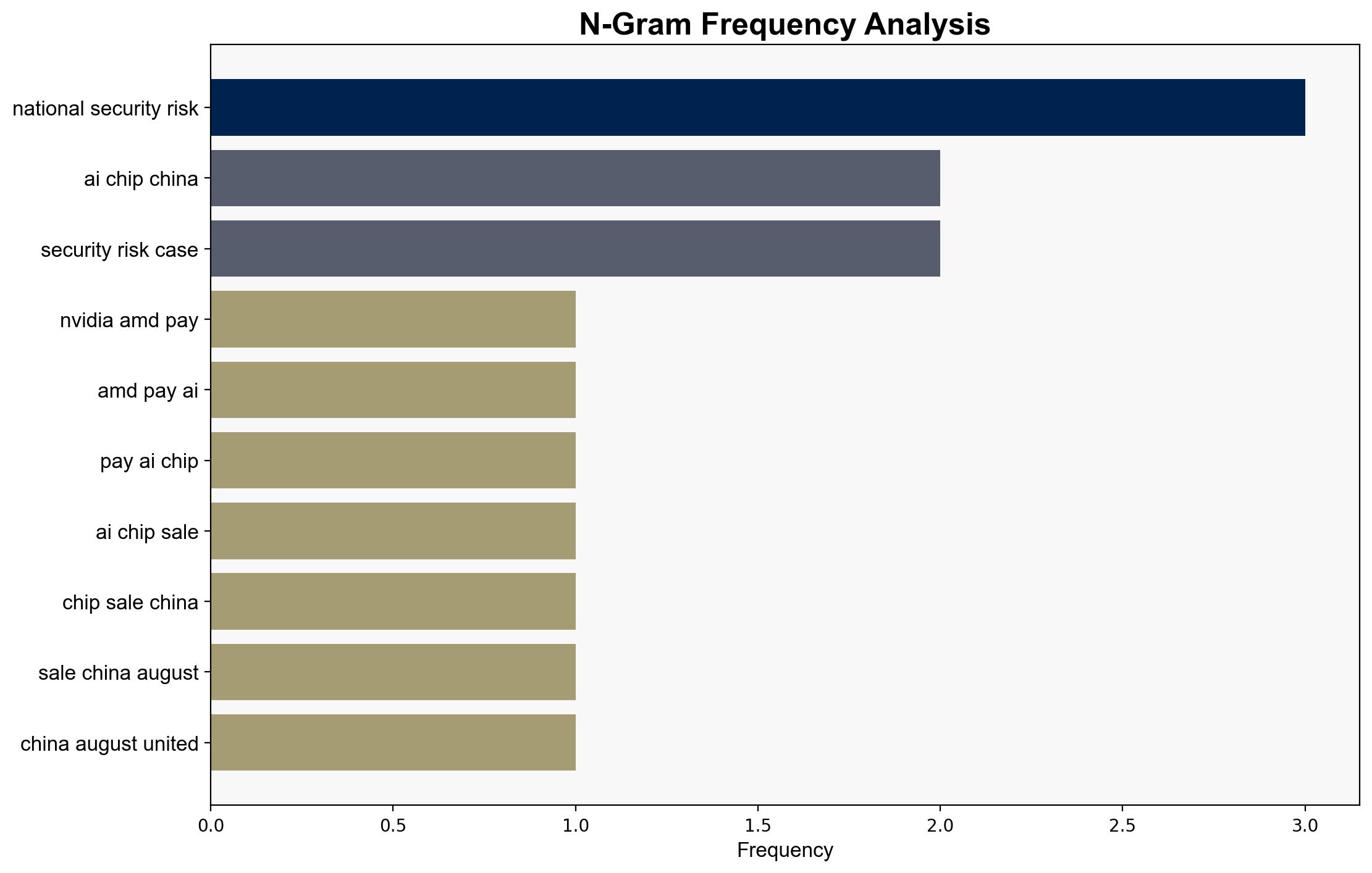Nvidia AMD to pay US 15 of AI chip sales to China – DW (English)
Published on: 2025-08-11
Intelligence Report: Nvidia AMD to pay US 15% of AI chip sales to China – DW (English)
1. BLUF (Bottom Line Up Front)
The strategic judgment indicates a moderate confidence level in the hypothesis that the agreement between Nvidia, AMD, and the U.S. government is primarily a revenue-driven decision rather than a strategic trade-off of national security for economic gain. The recommended action is to closely monitor the implementation of the agreement and its impact on U.S.-China relations and technological advancements.
2. Competing Hypotheses
1. **Revenue-Driven Agreement Hypothesis**: The deal is primarily motivated by economic interests, aiming to capitalize on the lucrative Chinese market while ensuring a revenue stream for the U.S. government. This hypothesis suggests that the U.S. administration is prioritizing economic gains over potential national security concerns.
2. **Strategic Trade-Off Hypothesis**: The agreement represents a strategic trade-off, where the U.S. government is willing to accept certain national security risks in exchange for maintaining technological influence and market presence in China. This hypothesis implies a calculated risk to balance economic and security interests.
3. Key Assumptions and Red Flags
– **Assumptions**:
– The U.S. administration believes that the economic benefits outweigh the potential national security risks.
– Nvidia and AMD are capable of ensuring that their products do not compromise U.S. security interests.
– **Red Flags**:
– Lack of transparency regarding the specific terms of the agreement and the criteria for export license approval.
– Potential cognitive bias in underestimating the long-term strategic implications of enhancing China’s AI capabilities.
– Inconsistent messaging from the U.S. government regarding the balance between economic interests and national security.
4. Implications and Strategic Risks
– **Economic Dimension**: The agreement could bolster U.S. semiconductor companies’ revenues but may also lead to increased dependency on the Chinese market.
– **Cybersecurity Risks**: Potential for increased cyber espionage or exploitation of AI technologies by China, raising concerns about backdoors or vulnerabilities.
– **Geopolitical Tensions**: The deal may strain U.S. relations with allies who perceive it as compromising security for economic gain.
– **Technological Escalation**: Accelerated AI development in China could shift the balance of technological power, impacting global AI leadership.
5. Recommendations and Outlook
- Implement stringent monitoring and compliance measures to ensure that AI chip exports do not compromise U.S. national security.
- Engage in diplomatic efforts with allies to communicate the rationale and safeguards of the agreement.
- Scenario Projections:
- Best Case: The agreement strengthens U.S. economic interests without compromising security, maintaining technological leadership.
- Worst Case: The deal leads to significant national security breaches and deteriorates U.S. relations with allies.
- Most Likely: A balanced outcome where economic benefits are realized with manageable security risks.
6. Key Individuals and Entities
– Jensen Huang
– Alasdair Phillips
– Robin
– Geoff Gertz
– Karl Sexton
7. Thematic Tags
national security threats, cybersecurity, economic strategy, U.S.-China relations





